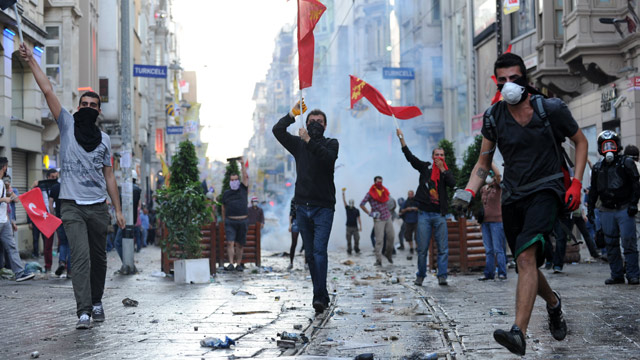A shale gas exploration company’s service vehicle was surrounded and seized by a group of self-described native warriors near Elsipogtog First Nation in so called “New Brunswick” on Tuesday, Royal Canadian Mounted Police say.
The truck driver was confronted at a gas bar along Route 116 during the lunch hour, police said, referring to it as a peaceful incident.
RCMP would not confirm who owns the truck, but it has a Stantec logo on its doors. Stantec is a Fredericton-based engineering firm doing work for SWN Resources Canada, a major industry player in the province.
RCMP described the incident as peaceful.
Elsipogtog Chief Aaron Sock had said earlier in the day his council does not welcome SWN’s seismic testing in New Brunswick.
SWN spokeswoman Tracey Stephenson described the incident as a “security event” involving one of the company’s subcontractors.
The protest in Elsipogtog continued into the evening Tuesday at the local RCMP detachment, where the truck containing seismic testing equipment was taken after protesters had seized it at a gas station along Route 116 during the lunch hour.
About 65 people, including children, gathered around the truck in a bid to keep it from being moved from the RCMP parking lot.
“I think [SWN] should pack up their gear and go,” said John Levi, who led the protest.
“This is not going to end until they do that,” he said. “That’s our goal.”
Levi said he is not affiliated with the band chief and council, but was appointed a few days ago as a warrior chief for his traditional native territory.
He said he represents about 5,000 people in Elsipogtog and the surrounding area, including non-native groups who oppose the development of a shale gas industry.
“They broke the law a long time ago when they started this fracking in our traditional hunting grounds, medicine grounds, contaminating our waters,” Levi said.
Hydraulic fracturing, also known as hydro-fracking, is a process where exploration companies inject a mixture of water, sand and chemicals into the ground, creating cracks in shale rock formations.
That process allows companies to extract natural gas from areas that would otherwise go untapped.
Opponents of the process say it could have a negative effect on local water supplies and many of them have held protests across the province.
Fracking secrecy questioned
The Opposition Liberals argued Tuesday there will be too much secrecy surrounding shale gas development in the province.
They noted sections of the Oil and Gas Act will remain off-limits from the Right to Information law.
But the energy minister contends the exempt sections apply to the geophysical data companies will collect and it’s unreasonable to expect it would be made public.
“That information, the companies that are putting the investment into that research, they should have the opportunity to utilize that information to their advantage, for a reasonable amount of time, and that’s what the Oil and Gas Act says,” Leonard said.
The Liberals argue they want to make sure the public knows what chemicals are used by shale gas companies. The government says the list of chemicals will be released publicly.











